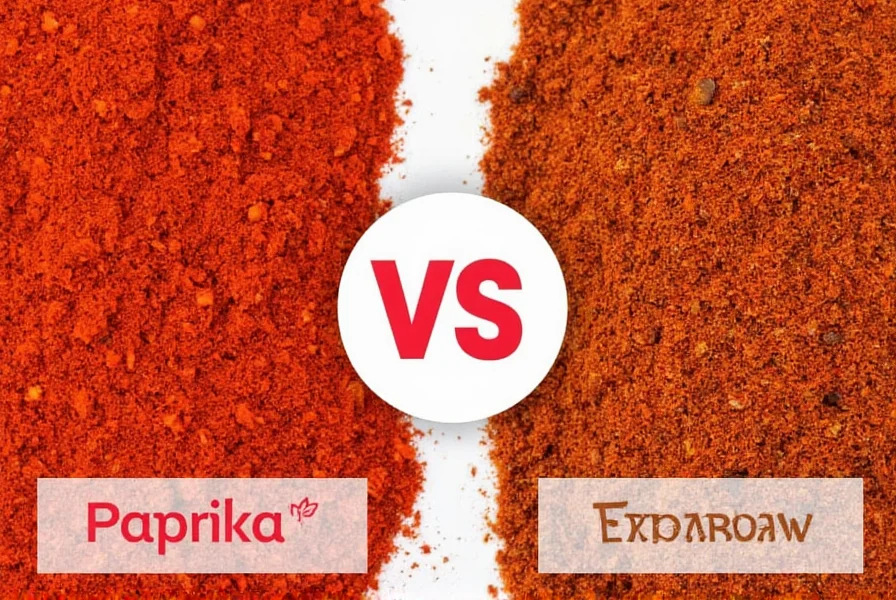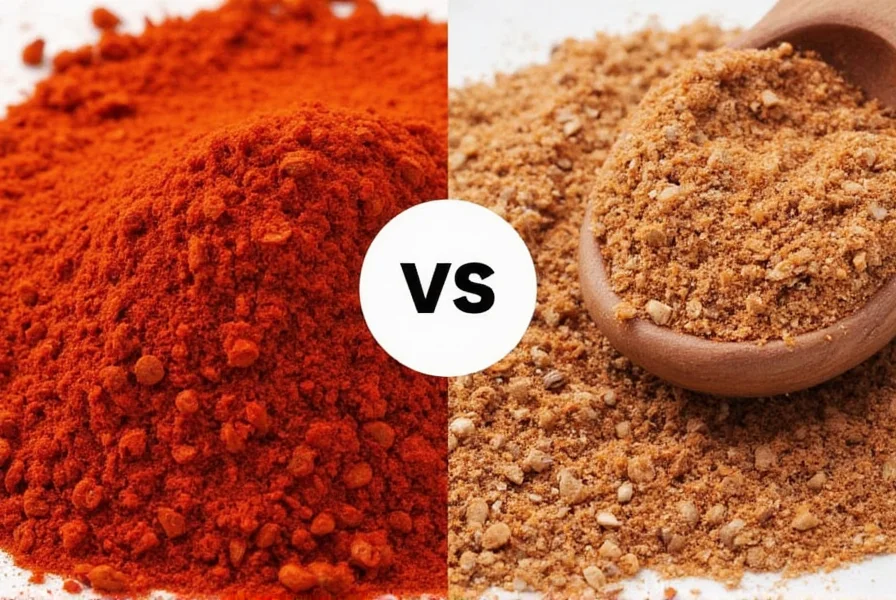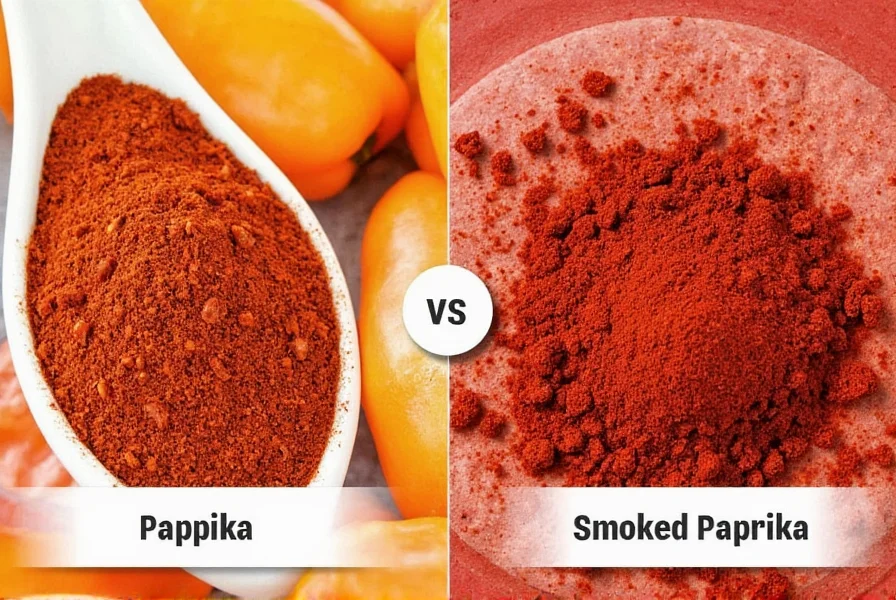Understanding the distinction between these two spice staples is essential for home cooks and professional chefs alike. While both originate from ground peppers, their flavor profiles, production methods, and culinary applications differ substantially. This comprehensive guide explores these differences in detail to help you make informed choices in your cooking.
What Exactly Is Paprika?
Regular paprika serves as a versatile spice made from finely ground dried peppers belonging to the Capsicum annuum family. Originating in Central Mexico and brought to Europe by Spanish and Portuguese explorers, paprika has become a staple in Hungarian, Spanish, and other global cuisines.
The production process involves harvesting ripe peppers, drying them thoroughly, and then grinding them into a fine powder. Depending on the pepper varieties used, paprika can range from sweet and mild to hot and pungent. Hungarian paprika, considered the gold standard, comes in eight distinct varieties differentiated by heat and flavor intensity.
When evaluating the difference between sweet paprika and smoked paprika, it's crucial to understand that regular paprika offers a clean, pepper-forward flavor without any smoky elements. Its vibrant red color enhances dishes visually while providing subtle sweetness or heat depending on the variety.
The Unique Production of Smoked Paprika
Smoked paprika, known as pimentón in Spain, undergoes an additional critical step that defines its character. After harvesting, the peppers (typically variedad gigante or ñora varieties) are smoked for one to two weeks over oak or other hardwood fires in special drying houses called secaderos.
This traditional smoking process, which originated in Spain's La Vera region, imparts a distinctive smoky aroma and flavor that regular paprika cannot replicate. The slow smoking not only adds flavor but also helps preserve the peppers. Following smoking, the peppers are ground into powder, with the grinding temperature carefully controlled to preserve flavor compounds.
Understanding the difference between Hungarian paprika and smoked paprika reveals that while Hungarian varieties focus on pepper variety and heat level, Spanish smoked paprika emphasizes the smoking technique and wood type used in production.
Key Differences at a Glance
| Characteristic | Regular Paprika | Smoked Paprika |
|---|---|---|
| Production Method | Dried peppers ground directly | Peppers smoked before grinding |
| Flavor Profile | Clean pepper flavor, sweet to hot | Distinct smoky flavor with pepper notes |
| Color | Bright red | Deeper red, sometimes brownish |
| Common Varieties | Sweet, hot, rose, noble sweet | Dulce (sweet), Agridulce (bittersweet), Picante (hot) |
| Primary Culinary Use | Color and mild pepper flavor | Adding smoky depth to dishes |
Flavor Profiles Compared
When examining the taste difference between paprika and smoked paprika, regular paprika delivers a straightforward pepper flavor that can range from sweet and mild to noticeably hot, depending on the variety. Sweet paprika offers gentle pepper notes without heat, while hot varieties provide significant spiciness without the smokiness.
Smoked paprika, by contrast, introduces a complex layer of wood-smoke flavor that complements the underlying pepper taste. Spanish smoked paprika comes in three main varieties:
- Pimentón Dulce - Sweet smoked paprika with mild heat
- Pimentón Agridulce - Bittersweet smoked paprika with moderate heat
- Pimentón Picante - Hot smoked paprika with significant heat
The smoking process creates flavor compounds similar to those found in barbecue, making smoked paprika particularly valuable in recipes where actual smoking isn't practical. This distinction is crucial when considering when to use smoked paprika instead of regular in your cooking.

Culinary Applications: When to Use Each Type
Understanding paprika vs smoked paprika substitution possibilities helps prevent recipe failures. While they can sometimes substitute for each other, the results will differ significantly.
Regular paprika works best when:
- You need vibrant red color without smoky notes
- Preparing traditional Hungarian goulash or chicken paprikash
- Adding mild pepper flavor to potato salads or deviled eggs
- Creating the red coloring in chorizo without smoke flavor
Smoked paprika shines when:
- Adding barbecue-like depth to vegetarian dishes
- Enhancing paella, roasted vegetables, or tomato-based sauces
- Creating smoky flavor in dishes where actual smoking isn't possible
- Adding complexity to bean dishes, stews, and marinades
For those wondering can I substitute smoked paprika for regular paprika, the answer depends on your recipe. In dishes where smoke flavor complements other ingredients (like tomato-based sauces), substitution works well. However, in traditional Hungarian dishes where smoke would be inappropriate, substitution would alter the dish's character significantly.
Buying and Storage Considerations
When selecting either variety, look for vibrant color and strong aroma. Quality paprika should have a fresh, clean pepper scent, while good smoked paprika should have a pleasant, wood-smoke aroma without bitterness.
Proper storage is essential for maintaining flavor. Both types should be kept in airtight containers away from light and heat. While regular paprika typically remains potent for 6-12 months, smoked paprika's complex flavor compounds may degrade slightly faster. For optimal flavor in dishes comparing paprika and smoked paprika uses, replace your spices every 6 months.

Common Misconceptions Clarified
Many home cooks confuse the difference between sweet paprika and smoked paprika, assuming "sweet" refers to sugar content rather than heat level. In paprika terminology, "sweet" means mild (no heat), while "hot" varieties contain significant capsaicin.
Another common misunderstanding involves Hungarian versus Spanish paprika traditions. Hungarian paprika focuses on pepper variety and heat level, while Spanish paprika emphasizes the smoking process. Neither is inherently superior—they serve different culinary purposes.
Practical Recipe Applications
For authentic Hungarian goulash, regular sweet paprika is essential—smoked paprika would create an inauthentic flavor profile. Conversely, traditional Spanish patatas bravas relies on smoked paprika for its characteristic flavor.
When experimenting with paprika vs smoked paprika in recipes, consider starting with half the amount of smoked paprika if substituting, as its flavor is more potent and distinctive. The smokiness can easily overwhelm delicate dishes if used excessively.
Frequently Asked Questions
Can I substitute smoked paprika for regular paprika?
Yes, but with caution. Smoked paprika will add a distinct smoky flavor that regular paprika lacks. In dishes where smoke complements other ingredients (like tomato-based sauces), use half the amount of smoked paprika. In traditional Hungarian dishes where smoke would be inappropriate, substitution isn't recommended.
What's the main difference between paprika and smoked paprika?
The fundamental difference is in production. Regular paprika is made from ground dried sweet peppers, while smoked paprika (pimentón) is made from peppers smoked over wood fires before grinding. This smoking process creates a distinctive smoky flavor profile that regular paprika lacks, making them suitable for different culinary applications.
Which is hotter, paprika or smoked paprika?
Heat level depends on the specific variety, not whether it's smoked. Both regular and smoked paprika come in sweet (mild), bittersweet, and hot varieties. Spanish smoked paprika (pimentón) has three varieties: dulce (sweet/mild), agridulce (bittersweet), and picante (hot). Hungarian paprika also offers multiple heat levels from mild to hot.
Why does my recipe specify smoked paprika instead of regular?
Recipes specify smoked paprika when the smoky flavor is essential to the dish's character. This is common in Spanish cuisine, barbecue-inspired dishes, or when creating smoky depth in vegetarian recipes. Using regular paprika instead would result in a flavor profile missing the distinctive smokiness that defines the dish.
How can I tell if my paprika has gone bad?
Fresh paprika should have a vibrant color and strong aroma. If it has faded color, weak scent, or musty odor, it's likely past its prime. Properly stored in an airtight container away from light and heat, regular paprika lasts 6-12 months while smoked paprika maintains peak flavor for about 6 months due to its more complex flavor compounds.











 浙公网安备
33010002000092号
浙公网安备
33010002000092号 浙B2-20120091-4
浙B2-20120091-4